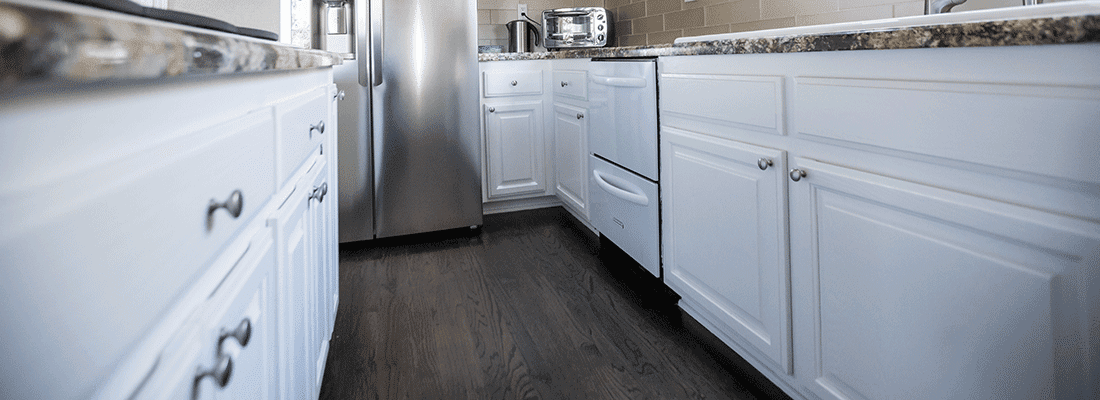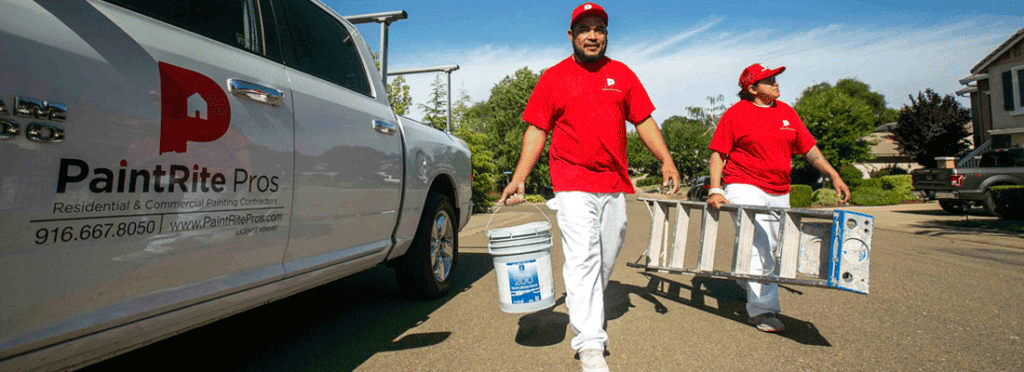
Kitchen cabinets are one of the major components of a beautiful kitchen and are usually one of the first things people notice when they visit your home. So, if your cabinets are starting to look old and outdated then now may be the best time to figure out the best way to refresh their look.
Everyone knows that one of the quickest and most cost-effective ways to change the look of a room is to paint. Adding a new color to your walls or changing the color of your trim can instantly increase the value of your home. However, when it comes to kitchen cabinets, you may want to know if you should reface, repaint, or replace them completely.
Let’s look into the details of each option to help you make an educated decision that works best for you and your budget.
How Long Does It Take for Paint To Dry?
1. Refacing process and costs
- Refacing your cabinets is a lot like changing the skin of your cabinets. It can significantly improve the surface look without all the hassle and expense of buying new cabinets.
- The basic refacing project usually consists of replacing new cabinet doors and drawer fronts of your existing cabinets. The face frames are then covered with veneer or the wood stain of your choice. The hardware-the hinges, handles, and drawer pull-are usually also replaced during refacing.
- A cabinet refacing pro will usually require two to four days to perform this service, depending on the size of your kitchen. Even though refacing cabinets costs less than replacing your kitchen with custom cabinets, don’t rush to refacing with the assumption that it will be a cheap alternative to new cabinets. Generally, refacing done by a professional installer costs about 50 percent of the cost of a new custom cabinet installation. It can also roughly cost you 75 percent of the cost of installing stock cabinets purchased from your local home improvement stores.
- Your costs to pay a professional to reface your cabinets in a basic 10 by 12-foot kitchen begin at $1000-$3000 for laminate veneers. This cost goes up to $2500-$6000 if you choose to go with real wood veneers and can shoot up significantly if your kitchen is on the larger side.
- Cabinet refacing will save you money if your existing cabinets are well-constructed, in good shape, and where a radically different look is your desire.
2. Painting your cabinets and cost
It’s always less expensive if you apply new paint instead of replacing or resurfacing. Let’s look at some of the reasons you might consider repainting your kitchen cabinets.
- Typically homeowners consider repainting cabinets because they are outdated and ready for a new look. Kitchen trends seem to change drastically and much faster than we expect. Whitewash oak was extremely popular in the 1980s and 90s but then was replaced by a more natural look like oak, and eventually moved to the darker wood finishes such as cherry and maple. The latest trends tend to be more of a distressed look typically known as French Country.
- Your cost of repainting a kitchen is typically half the cost of replacing it. The paints that are being used are very durable and will have every bit the longevity of new cabinets in most cases.
- The average cost to paint cabinets is $3 to $10 per square foot or $30 to $60 per linear foot for all materials and professional labor. You can expect painting contractors to charge $50 to $100 per door, $120-$170 per cabinet, and $20-$30 per drawer.
- Painting your kitchen cabinets yourself will be considerably less expensive. Your base cost would be anywhere from $200 to $600, depending on the brand of paint and the supplies you will have to buy. While doing the job yourself will save you money, be aware of the time you will put in. Also, you may be sacrificing quality for price as professionals are meticulous and experts at their craft.
3. Replacing kitchen cabinets and costs
Before you decide on new kitchen cabinets for your home, note some added information about the cost to replace them. You will want to make a fully informed decision about new cabinets and those other vital details that go into a successful kitchen renovation.
Here’s a run-down of the different quality levels of kitchen cabinets and their costs.
- Stock cabinets are premade in a factory to standard sizes. They are usually the cheapest of all your new kitchen cabinetry choices. While they are inexpensive, they might also seem a bit plain or dull. Stock cabinets might also stand out against or clash with detailed crown molding and other special features in a room. The cost for stock cabinets is around $60-$200 per linear foot.
- Semi-custom cabinets start with stock cabinetry and then include added details, such as fancy trim or glass inserts. These will cost you around $100-$650 per linear foot.
- Custom cabinets are made from scratch and might also include personalized details such as specialty shelving sizes, a custom paint color, and slide-out shelves. They are typically the highest costing cabinets. But they’re sure to guarantee the look you are hoping for and are very high quality. They’ll cost you between $500 and $1200 per linear foot.
- Kitchen cabinet installation costs add to your overall purchase price. But, cabinet installation is not necessarily something you want to tackle on your own. Improper installation could lead to uneven cabinets with unsightly gaps between them or it can result in your cabinets pulling away from the walls. You can expect to spend somewhere between $150 to $380 per linear foot for total installation. Each cabinet will take 60-80 minutes to install. You can expect to pay an hour or two of labor per cabinet that you are having installed.
Conclusion
Now that you are aware of the details and costs of all three options, you should be able to make a wise decision on which direction you want to go in with your kitchen cabinets. If you are still unsure or have any other questions with your project, give the professionals at PaintRite Pros a call. We are located in the Sacramento area and would be more than happy to assist you. In addition to having fluent Spanish speakers on our staff, we also serve Dixon, Davis, Stockton, Folsom, Vineyard, El Dorado Hills, and more! Click here to get a free estimate.


